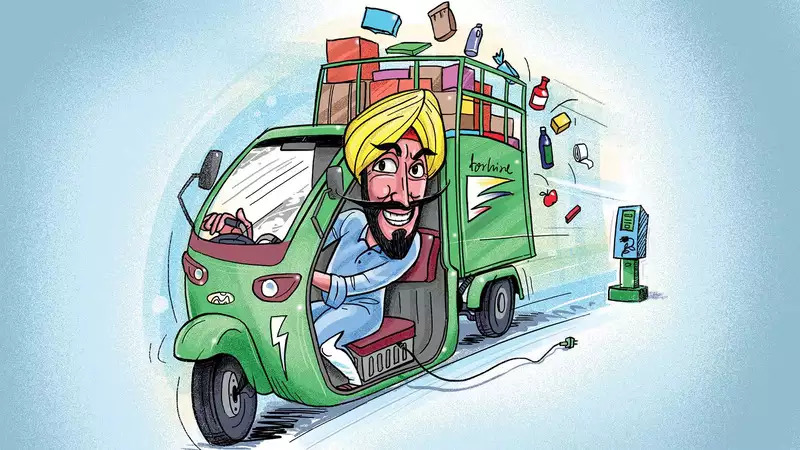The impact of free rural electricity in Punjab is severe, leading to fiscal deficits. Climate change will drive electrification, impacting budgetary concerns with the rise of electric vehicles and potential revenue losses from petrol.
Political parties compete in offering freebies at election time. Some are affordable. But free rural electricity is not. Punjab, once the richest state, has declined to just above average, a major reason being that free rural electricity has created huge fiscal deficits that have made it the most indebted state in India, unable to even pay salaries let alone invest in infrastructure and quality education. Free power accounts for 80% of Punjab’s accumulated debt, a warning to all other states.
But now a new, more dire warning is required. To combat climate change, fossil fuels like petrol and diesel are going to be phased out. Electrification of all transport and rural machines is only a matter of time. So, rural demand for electricity will skyrocket as petrol and diesel are replaced with electricity in vehicles. Budgetary cost of free rural electricity will soar.
Electrification of two-wheelers is proceeding apace. Sales of electric two-wheelers rose 34% in the last quarter and total sales in 2023-24 will cross 1.5 million. An electric two-wheeler costs more than a petrol-powered one, but its running costs are much cheaper. Petrol is so heavily taxed that the lifetime cost of running an electric two-wheeler is already far less than for petrol-based ones. Consumers will not discard their existing two-wheelers, but new purchases will overwhelmingly be of electric substitutes. This is happening rapidly in three-wheelers, where lifetime costs are critical. Electric two-wheelers are economic even if consumers are paying for electricity, as in cities.
But in rural areas, where electricity is free or almost free, the cost advantage of electric two-wheelers is overwhelming. The market will go almost entirely electric. The motorcycle has become a standard form of personal transport in rural areas. I found in a research project in Gujarat four years ago that of tribals displaced by Sardar Sarovar Dam, now resettled in mainstream villages, 61% owned motorcycles. Of their former neighbours still in the forest villages, as many as 31% owned motorcycles. The percentages will keep rising.
Sales of electric cars are also rising in rural areas, especially in states with rich large farmers like Punjab and Haryana. Wherever land acquisition takes place for a project, farmers buy cars with their compensation money. The electrification of cars will take longer than for two wheelers. But Tata is already selling three electric brands — Tiago, Punch, and Nexon — and Mahindra has an electric SUV. The cost advantage of an electric car is much less than that of an electric two-wheeler.
But if electricity is free, electric cars become unbeatable. Expect the sale of electric cars in rural areas — especially those that are urbanising — to grow rapidly.Electrifying heavy vehicles will be more onerous. But already many global companies, including Tesla, are making electric trucks. It is only a matter of time before all forms of farm machinery — tractors, pesticide sprayers, combine harvesters, Happy Seeders — will also get electrified. The major cost of electric vehicles lies in the batteries.
The number of batteries (and hence the cost) rises with the workload required. It is least for two-wheelers and most for tractors and trucks. But if electricity is free, electric tractors, trucks and combine harvesters will quickly become economic.State governments will be hit with a double whammy. On the one hand, they will have to shell out far more for free or subsidised electricity. On the other hand, they will lose revenue from sales of petrol and diesel on which they are heavily reliant today.
RBI estimates that 28% of state government revenues come from taxes on petroleum products. Combating climate change and phasing out fossil fuel sounds fine, but they present a budgetary nightmare for states.Farmers cannot today sell the free electricity they get. But when electric trucks and buses become common, big farmers can offer to electrically charge these commercial vehicles for a modest fee.
Transport companies will queue up at farms. That will send the state government bill for free electricity spiralling further. Checking misuse of free power will be difficult.What is the way forward? Central and state governments need to get together to stop the disastrous competition in subsidising power. Farmers should pay for power, so they have an incentive to conserve its use. Electricity charges can be reflected in higher Minimum Support Prices for crops.
In addition, PM Kisan and other cash grant schemes given by state governments can be increased.This will be politically tricky. Farmers have already shown their ability to block roads and paralyse transport, and will surely resist ending free power. But the task is essential.


